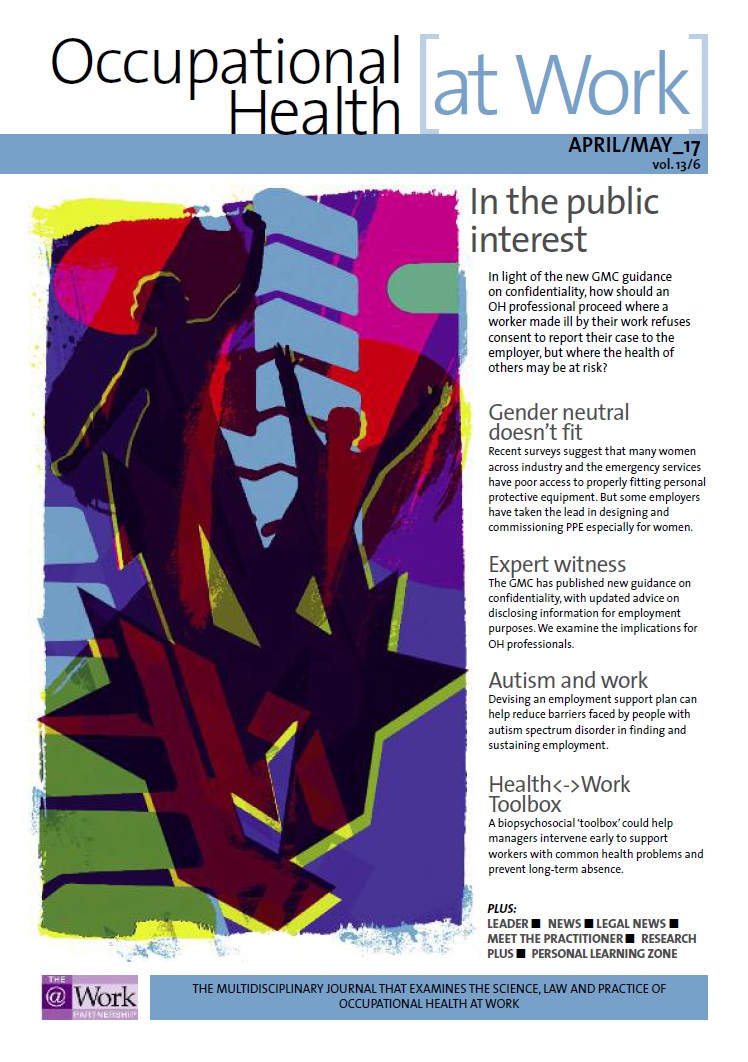April/May 2017 (vol. 13/6)
ContentsFeaturesNewsLegal
NewsResearch DigestResearch PlusCPD
Research Plus
More alcohol, more absence
There is a dose–response relationship between daily alcohol consumption and risk of sickness absence, according to a prospective cohort study of French utility workers (part of the ‘GAZEL’ epidemiological study, set up in 1989 to follow more than 20,000 workers). Absence data for 9,907 daily drinkers (8,442 men and 1,465 women) was collected for an average of 8.4 years for male participants and 11.2 years for females. Absence duration was classified as: short – up to seven days; intermediate – eight to 28 days; and long – over 28 days. Daily alcohol consumption was classified using the World Health Organization guide for monitoring alcohol consumption: ie for men, low (1–40 g alcohol/day), moderate (41–60), high (61–100) or very high consumption (over 100); for women, low (1–20 g/day), moderate (21–40), high (41–60) and very high consumption (over 60). Data were adjusted for occupational status, age, smoking status and other factors. Increasing alcohol consumption was associated with greater risk of sickness absence with a dose–response relationship in both sexes (p< 0.01 for men; p = 0.01 for women). Male employees with moderate, high and very high daily alcohol consumption had higher risks of sickness absence compared with those in the lowconsumption group: moderate-consumption risk ratio (RR) = 1.15 (CI 1.07–1.23); high-consumption RR = 1.31 (CI 1.23–1.41); and very high-consumption RR = 1.67 (CI 1.36–2.06). Women with high or very high consumption were more likely to take sickness absence than those with low consumption (RR = 1.19; CI 1.03–1.38). For men, increasing alcohol consumption was associated with higher risks of taking short, intermediate and long sickness absences (p <0.01 for each); in women, it was associated with increased risks of short (p = 0.01) and long absences (p = 0.02). Daily alcohol consumption was also associated in men with long absences due to mental health, cardiovascular, respiratory and musculoskeletal diseases and injury (p <0.01 for each), and in women with respiratory disorders (p = 0.05), digestive diseases (p = 0.04) and injury (p = 0.04).
European Journal of Public Health 2017; online first: doi:10.1093/eurpub/ckx012.
Occupational Health at Work April/May 2017 (vol. 13/6) pp39



